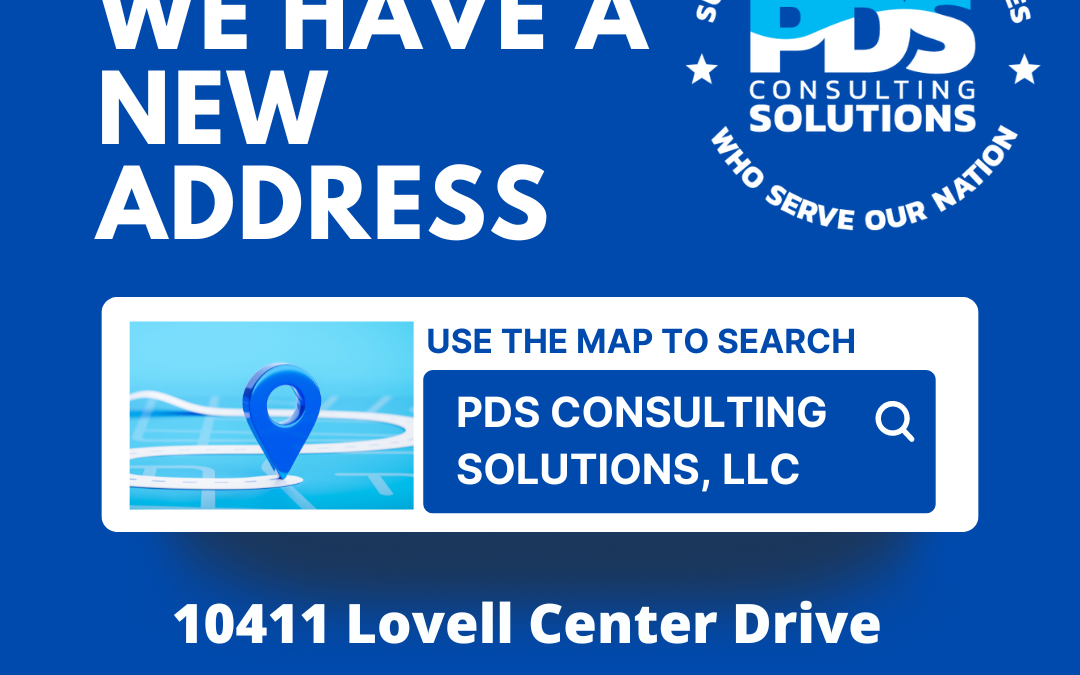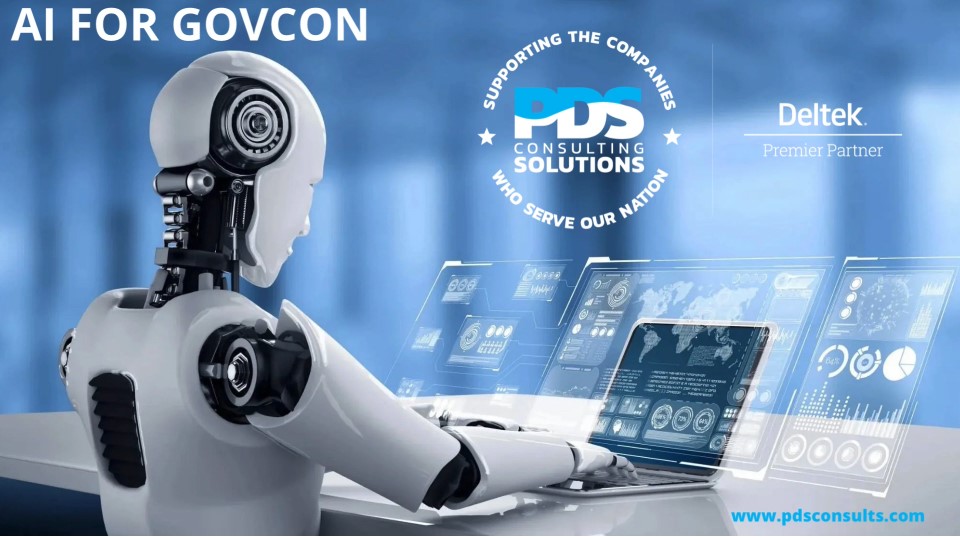
Congratulations To Jesse Kepner on His Promotion!

Please join us in congratulating PDS team mate, Jesse Kepner, CSCP, on his promotion to Director of Costpoint Materials & Mfg!


Please join us in congratulating PDS team mate, Jesse Kepner, CSCP, on his promotion to Director of Costpoint Materials & Mfg!


Please join us in congratulating PDS team mate, Brenda Selecman, on her promotion to Director of Costpoint F&A!

MANUFACTURING/SUPPLY CHAIN
The manufacturing sector is experiencing significant technological advancements, with automation and artificial intelligence (AI) being key tools to address workforce turnover while maintaining quality standards. One of the industry’s primary concerns remains the supply chain, but an even greater challenge is replacing experienced workers who are aging out of the workforce. Although manufacturers have identified technological initiatives and other strategies to manage these issues, the follow-through to invest in and scale these systems remains a significant obstacle. In 2024, talent acquisition and quality control remain the top challenges, with talent attraction and retention being the most critical issue for this year, cited by 33% of Clarity Report respondents. This challenge is particularly acute for small businesses, with 60% highlighting it as their number one concern. The transition to a new workforce must be managed carefully, as maintaining high quality standards is crucial.
A new challenge identified this year is managing legacy systems, which ranks third overall. The difficulties of securing these systems, high maintenance costs, and loss of domain knowledge as experienced employees retire are significant issues. Legacy systems also hinder the incorporation of automation, a clear priority for manufacturers. Automation is increasingly seen as a solution to talent and quality control challenges, with 44% of respondents selecting it as a strategy for the upcoming year, rising to 60% among small businesses, which have a large gap to fill (only 14% automated versus 49% overall).
Implementing automation is complex, particularly for small and mid-size businesses that struggle with technology acceptance and the significant cost investments required. In contrast, the largest manufacturers cite scalability as their main challenge in building on their more advanced automated processes. Beyond automation, AI and machine learning (ML) are also key technological focuses. Implementation of AI/ML systems was the top digital transformation initiative, selected by 41% of respondents, up from 29% last year. Deploying more robotic automation tied for second among digital transformation initiatives at 36%, alongside process reengineering, a perennial focus for optimizing manufacturing and other business functions.
High-performing manufacturers, defined by the highest profit/loss margins, are leading the way in automation. Nearly all of this group (89%) report having automated operations, compared to less than half of the other respondents (43%). High performers view automation as a solution to talent challenges, with only 22% citing talent attraction and retention as a top challenge, compared to 35% of other respondents. Additionally, 56% of high performers leverage automation to address their challenges, versus 42% of the broader group. Their key performance indicators (KPIs) also differ, with only 11% tracking capacity utilization, the top KPI overall, while more than half of high performers (56%) track inventory turns.
Manufacturers are increasingly adopting technology to tackle talent shortages and quality challenges. The continuous turnover in the workforce has left manufacturers struggling to replace their most experienced workers. In response, automation, AI, and other technological strategies are becoming central. However, these innovations also bring unique challenges that manufacturers must navigate.
How does Costpoint™ help?
Streamlined Supply Chain Management: Costpoint™ enables aerospace and defense contractors to effectively manage complex supply chains by integrating procurement, inventory, and logistics processes. This integration ensures real-time visibility and coordination across the entire supply chain, reducing delays and improving efficiency.
Advanced Inventory Control: Costpoint™ provides robust inventory management capabilities that are critical for aerospace and defense contractors. It helps track inventory levels, manage stock locations, and monitor usage rates, ensuring that critical components are available when needed while minimizing excess inventory costs.
Automation with TIP SFE: By leveraging the Technology Integration Platform (TIP) with Shop Floor Execution (SFE), Costpoint™ automates various manufacturing and supply chain processes. This automation reduces manual effort, minimizes errors, and accelerates production cycles, leading to increased productivity and cost savings.
Enhanced Supplier Collaboration: Costpoint™ facilitates better collaboration with suppliers through its supplier management features. It allows contractors to manage supplier relationships, evaluate performance, and streamline communication, ensuring that suppliers meet quality standards and delivery schedules.
Real-time Analytics and Reporting: Costpoint™ offers real-time analytics and reporting tools that provide aerospace and defense contractors with critical insights into their supply chain operations. These tools enable contractors to make data-driven decisions, optimize supply chain performance, and quickly respond to changes in demand or supply chain disruptions.
Costpoint™ stands out as the only ERP developed specifically for government contractors, uniquely tailored to address the stringent requirements and complex challenges of this sector. Its comprehensive suite of tools ensures regulatory compliance, enhances project management, and provides accurate cost accounting, all while maintaining robust security and data protection. By offering advanced features for supply chain management and leveraging automation through platforms like TIP SFE, Costpoint™ empowers aerospace and defense contractors to optimize operations and achieve greater efficiency. Dedicated to the success and survival of the industry, Costpoint™ is an indispensable asset for government contractors, providing the specialized support necessary to thrive in a highly regulated and competitive environment.


Join Us at Deltek ProjectCon 2024!
Deltek ProjectCon 2024 is the premier event for project-driven business professionals looking to elevate their skills, gain cutting-edge insights, and connect with industry leaders. From November 12-14 in National Harbor, MD, thousands of professionals will come together for three days of transformative learning, networking, and collaboration.
Whether you’re looking to optimize performance through expert-led breakout sessions or stay ahead with the latest innovations in Deltek Costpoint, this event has something for everyone. Sponsored by PDS Consulting Solutions, LLC, it’s an opportunity to connect with peers, explore new solutions, and drive success in your organization.
Date: November 12th – 14th, 2024
Location: Gaylord National Resort & Convention Center – National Harbor, MD
Swing By Our Booth: Kiosk 10A in the Expo Hall
Don’t miss out on this must-attend event for project-focused businesses. Register today and experience how Deltek ProjectCon 2024 can help you and your business thrive!


ATTENTION! PDS Consulting Solutions has a new address!
As of October 1, 2024 we will be located at:
10411 Lovell Center Drive, Suite 103
Knoxville, Tennessee 37922
Please make a note of it and search for us on the map here: https://tinyurl.com/3yhvjm9j

ARTIFICIAL INTELLIGENCE AND GOVCON
Artificial intelligence (AI) and machine learning are actively revolutionizing the government contracting industry, significantly impacting how projects, human resources, and manufacturing sectors are executed and managed. According to the Deltek Clarity Report, a staggering 80% of respondents are actively using AI to optimize at least one of the major industry sectors, whether it’s the facilitation of talent procurement, increased automation in manufacturing, or the speed of which new projects are acquired, developed, and executed. AI tools are also assisting in the design, testing, and manufacturing of new products, facilitating the development process by making things faster and more accurate.
AI is also increasingly recognized as a valuable tool for supporting business development (BD) initiatives in the government contracting industry. Despite ranking lower on the priority list, over half (55%) of Clarity Report BD respondents acknowledge the importance of leveraging automation and AI. When asked about their plans for using AI in business development, respondents cited various applications, with the most prominent being the identification of opportunities with the highest win probability and the development of text for proposals and Requests for Information (RFIs). However, there remains a notable portion of the industry that has yet to embrace AI for business development. Specifically, 21% of respondents indicated no plans to use AI for BD in the coming year. This reluctance is more pronounced among small and mid-size businesses, with 27% and 33%, respectively, opting out of AI investments for BD.
Alan Balutis, President of APB Ltd and managing partner with the CIO Collective, highlights the gradual yet promising adoption of AI within federal agencies. He observes that agencies are beginning to utilize AI for procurement tasks. This includes using AI to extract clauses and provisions from previous RFPs to structure new ones, a practice already underway in several departments and agencies. Balutis also sees potential in expanding AI use to review and screen proposals, down-select candidates, and evaluate past performance more meaningfully. He argues that the government currently falls short in thoroughly assessing past performance when making awards, suggesting that AI could significantly improve this process.
While AI adoption in business development within the government contracting sector is still evolving, its potential applications are diverse and promising. By identifying high-probability opportunities and automating proposal development, AI can enhance the efficiency and effectiveness of BD initiatives. Despite some resistance, especially among smaller firms, the ongoing integration of AI in procurement and performance evaluation indicates a transformative shift in the industry. As AI technology continues to mature, its role in business development is likely to expand, offering new ways to optimize operations and improve outcomes in government contracting.
The Government Contracting industry is finding broad application potential for AI and machine learning, but experts are advising caution against implementing these tools without a clear strategy. It’s essential to understand how AI/machine learning can be implemented effectively to avoid critical pitfalls and maximize benefits. While AI is improving exponentially, and its potential is ever-growing, healthy skepticism is still greatly encouraged, as it is far from being a perfect science.